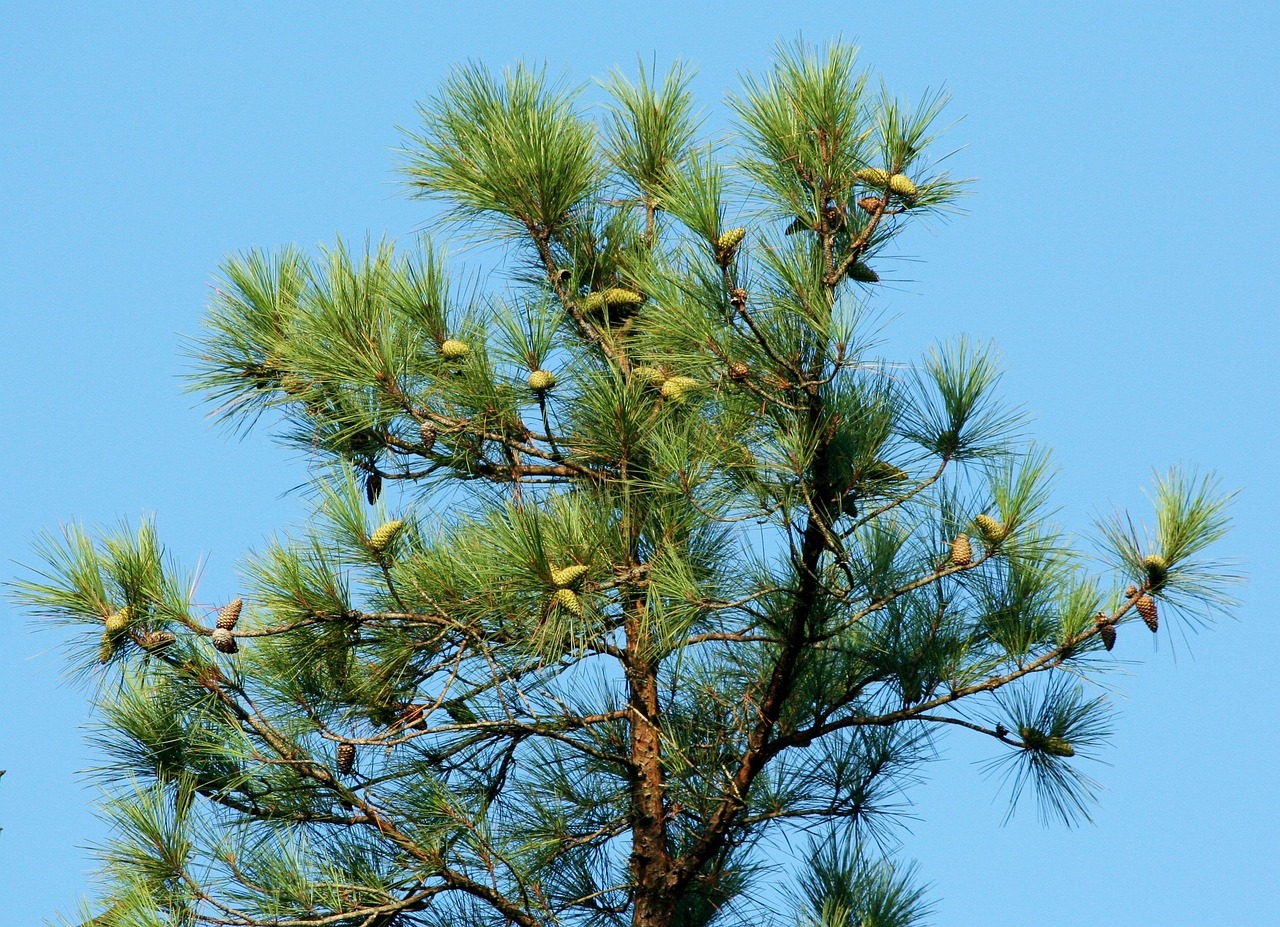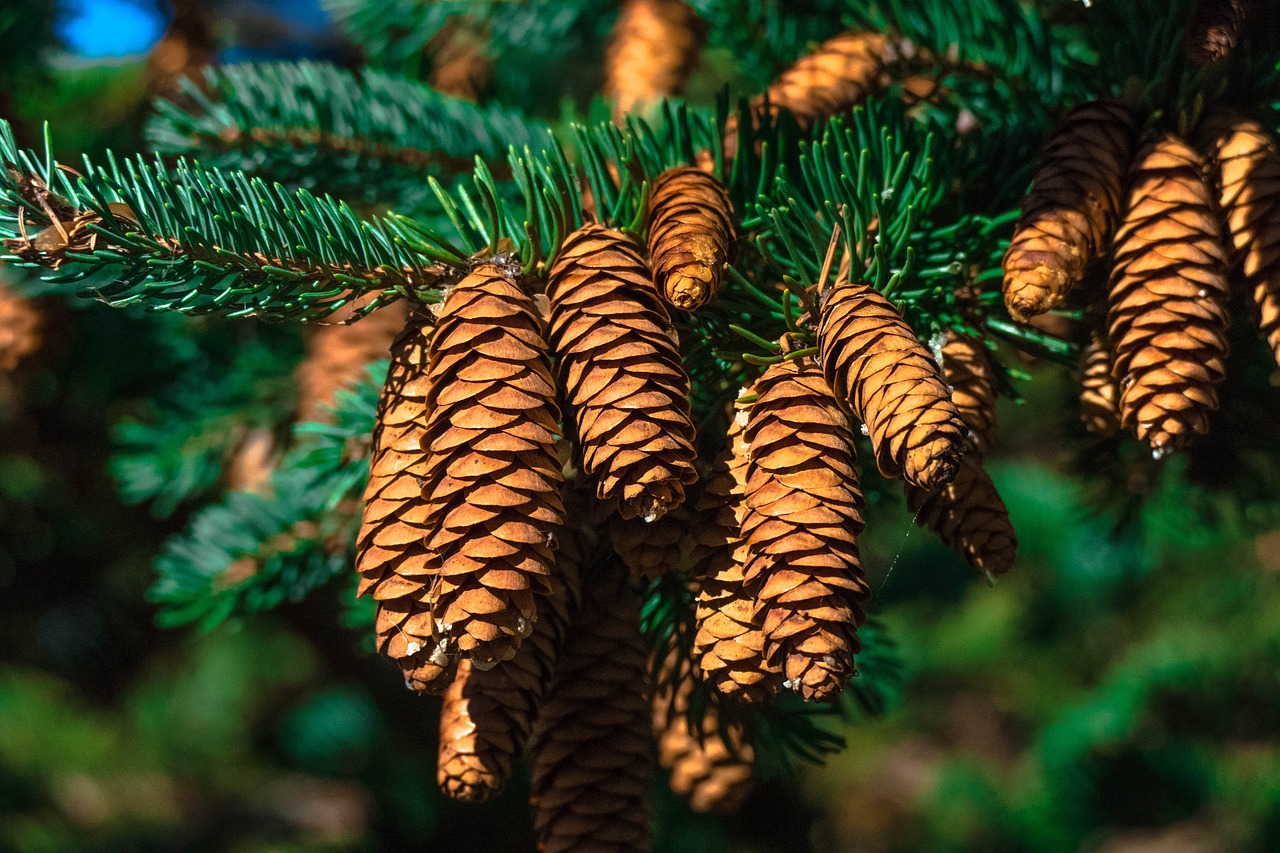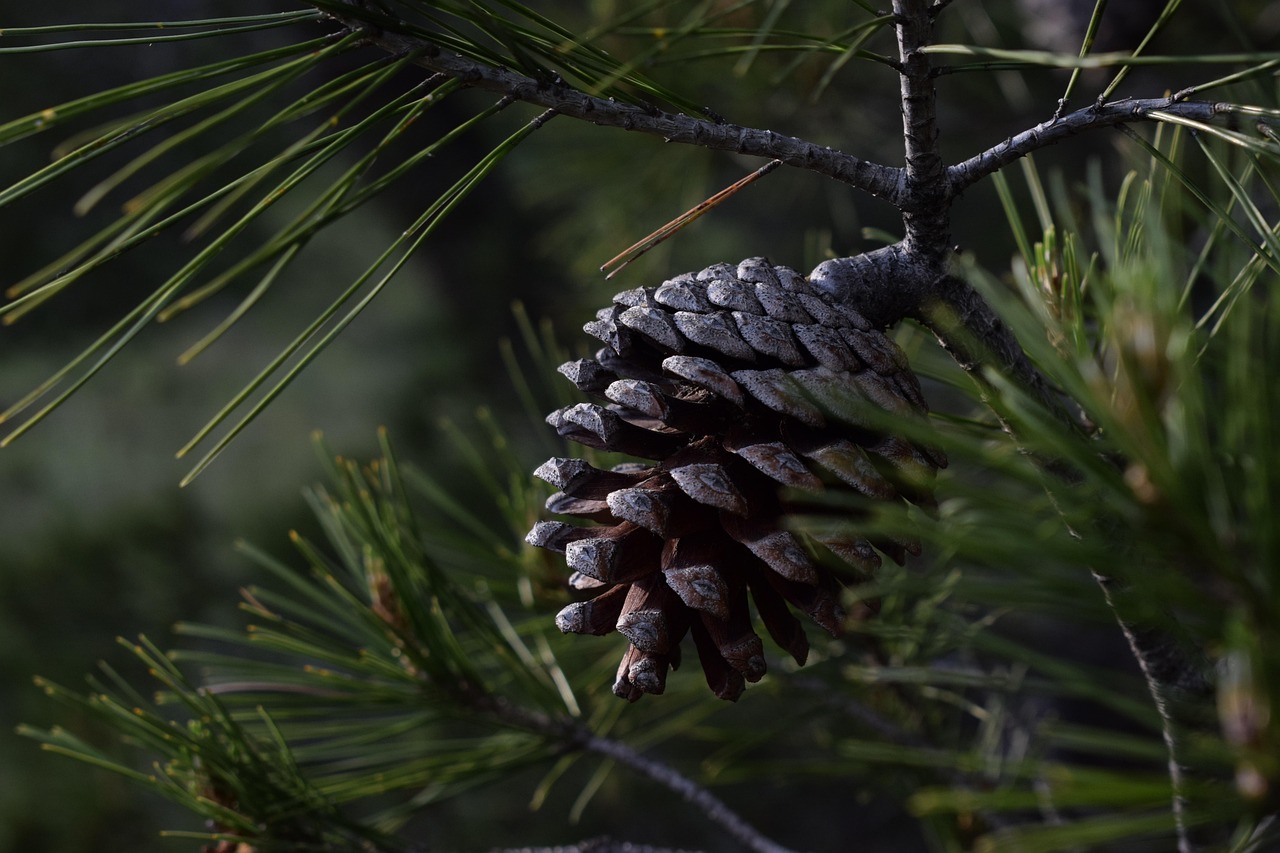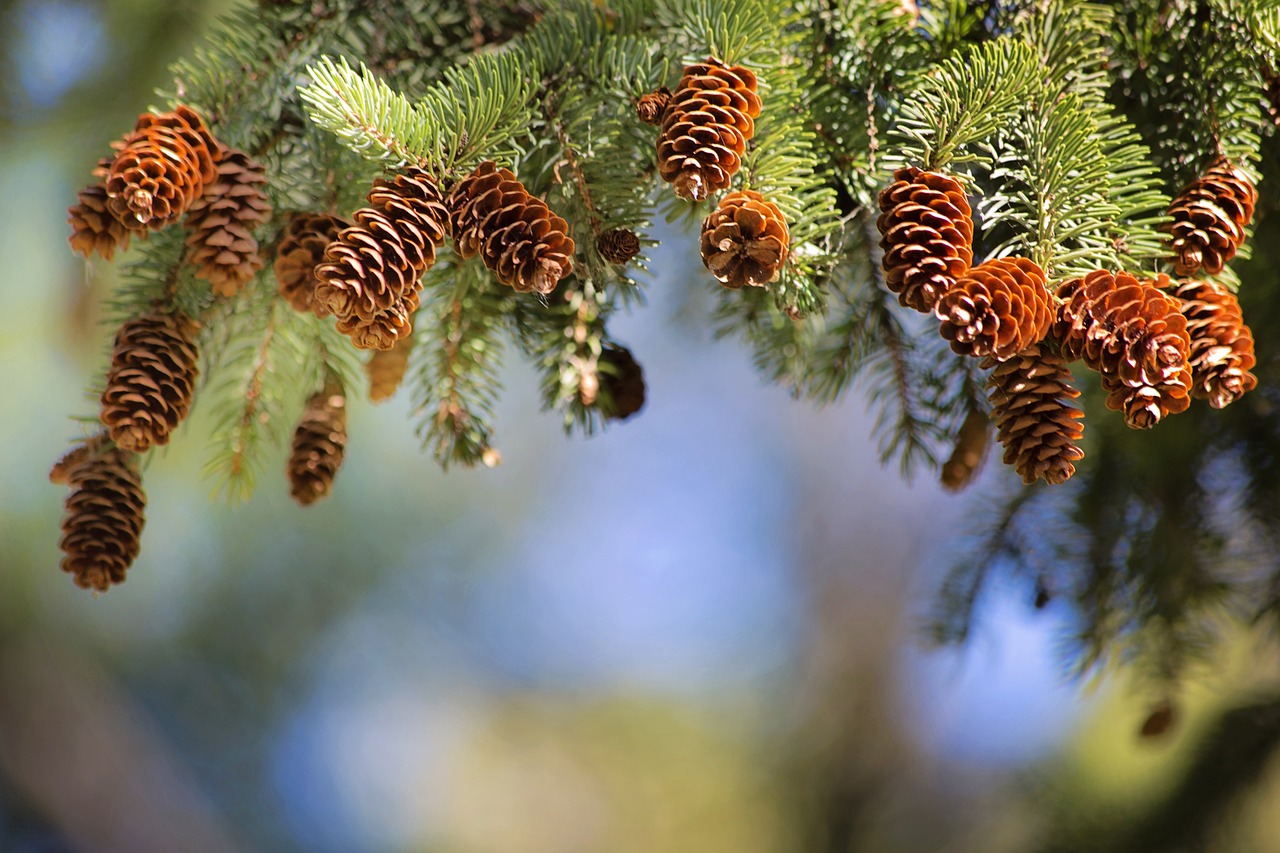Yes, the needles and young shoots of the Loblolly Pine are edible. They are often used to make tea or added to dishes for flavor. However, it is essential to ensure that they are collected from trees that have not been treated with chemicals or pesticides.
Understanding Loblolly Pine

Loblolly Pine, scientifically known as Pinus taeda, is a tree species native to the southeastern United States. It is highly valued for its fast growth and adaptability to a variety of soil types. Often found in wetlands and uplands, this tree can reach heights of over 100 feet and has a straight trunk with a dense canopy.
The needles of the Loblolly Pine are long, slender, and typically arranged in clusters of three. These needles can grow up to 10 inches in length. Young shoots, which are the new growth at the tips of branches, are tender and have a more pleasant taste compared to older needles. Both parts of the plant have been used for various purposes, including culinary applications.
Uses of Loblolly Pine
The Loblolly Pine is not just an essential part of its ecosystem; it also has various uses in human culture and industry. Here are some notable applications:
- Lumber Production: The wood is commonly used in construction, furniture making, and paper production.
- Ecological Benefits: It provides habitat for wildlife and plays a vital role in soil stabilization.
- Culinary Uses: Young shoots and needles can be used in teas and as flavoring agents in various dishes.
Nutritional Value
The young shoots and needles of the Loblolly Pine contain several nutrients that can be beneficial to health. They are rich in vitamin C and have antioxidant properties. Here’s a brief overview of their nutritional content:
| Nutrient | Amount per 100g |
|---|---|
| Calories | 50 |
| Vitamin C | 100 mg |
| Carbohydrates | 13 g |
| Fiber | 5 g |
| Protein | 2 g |
Harvesting Considerations
When harvesting Loblolly Pine needles and young shoots, it is important to do so responsibly. Here are some tips for safe gathering:
- Identify the Tree: Ensure you can accurately identify Loblolly Pine. Look for its characteristic long needles and bark texture.
- Avoid Contaminated Areas: Harvest from trees that are not near roadsides or areas where chemicals may have been used.
- Harvest Sparingly: Take only what you need to ensure the sustainability of the tree population.
The taste of Loblolly Pine’s young shoots and needles can be described as refreshing, with a hint of citrus. This makes them an interesting addition to various culinary creations, such as salads or infused beverages. As with any wild food, it’s advisable to try small amounts initially to see how your body reacts.
Loblolly Pine’s versatility extends beyond just its edibility. Understanding its uses and benefits can deepen our appreciation for this remarkable tree species that thrives in diverse environments.
Culinary Applications of Loblolly Pine
The culinary uses of Loblolly Pine are diverse and can add unique flavors to various dishes. Both the needles and young shoots can be incorporated into recipes in creative ways. Understanding how to use these parts of the tree can enhance not only your meals but also your appreciation for foraging.
Making Pine Needle Tea
Pine needle tea is a popular beverage made from the fresh needles of the Loblolly Pine. This tea is not only flavorful but is also rich in nutrients. Here’s a simple method to prepare it:
- Gather Fresh Needles: Collect a handful of young, green needles.
- Wash Thoroughly: Rinse the needles under cool water to remove any dirt or debris.
- Chop the Needles: Cut the needles into smaller pieces to help release their flavor.
- Boil Water: In a pot, bring water to a boil.
- Add Needles: Add the chopped needles to the boiling water and let them steep for 10-15 minutes.
- Strain and Serve: Strain the tea into a cup and enjoy it hot. You can sweeten it with honey if desired.
This tea has a refreshing taste with a hint of citrus, making it a delightful drink, especially during colder months.
Incorporating into Dishes
The young shoots and needles of Loblolly Pine can also be used in various dishes. Here are some ideas:
- Salads: Add finely chopped young shoots to salads for a refreshing crunch and flavor.
- Infused Oils: Create infused oils by steeping pine needles in olive oil. This oil can be used for dressing salads or drizzling over dishes.
- Baking: Incorporate chopped needles into bread or muffins for an aromatic twist.
- Garnishing: Use young shoots as a garnish for soups and fish dishes to add visual appeal and taste.
Health Benefits of Loblolly Pine
Loblolly Pine needles and young shoots offer several health benefits due to their rich nutritional profile. Here are some key advantages:
Nutritional Content
The nutritional content of Loblolly Pine’s edible parts is impressive. They contain:
- Vitamin C: A powerful antioxidant that supports the immune system and skin health.
- Aromatic Compounds: These contribute to respiratory health and provide a pleasant scent.
- Flavonoids: These compounds have anti-inflammatory properties and may improve heart health.
Traditional Uses in Herbal Medicine
Historically, Native American tribes have utilized various parts of the Loblolly Pine for medicinal purposes. Some traditional uses include:
- Treating Coughs and Colds: The tea made from pine needles was used to alleviate respiratory ailments.
- Wound Healing: The sap was sometimes applied to cuts and scrapes for its antiseptic properties.
- Boosting Energy: Consuming pine needle tea was believed to increase vitality and energy levels.
These traditional uses highlight the importance of Loblolly Pine not only as a food source but also as a part of cultural heritage.
Sustainability and Ethical Foraging
As interest in foraging continues to grow, it is essential to practice sustainable harvesting methods. When gathering Loblolly Pine needles and young shoots, consider the following guidelines:
- Know Your Limits: Only take what you need to minimize impact on the tree population.
- Avoid Overharvesting: Give trees time to regrow their foliage, especially in areas where resources are limited.
- Respect Nature: Follow local regulations regarding foraging to ensure that you are not harming protected species or habitats.
By practicing ethical foraging, we can enjoy the benefits of Loblolly Pine while preserving its natural environment for future generations.
Potential Risks and Precautions
While the needles and young shoots of Loblolly Pine are edible and offer several health benefits, it is crucial to be aware of potential risks associated with their consumption. Understanding these risks can help ensure a safe and enjoyable foraging experience.
3>Allergic Reactions Some individuals may experience allergic reactions to pine needles, including Loblolly Pine. Symptoms can vary but may include: It is advisable for first-time users to start with small amounts to gauge their body’s reaction before consuming larger quantities. Another concern is the possibility of contamination. Here are some important factors to consider: >Accurate identification is essential when foraging for Loblolly Pine. Mistaking it for other pine species can lead to undesirable consequences. Here are some identifying characteristics: Loblolly Pine displays several distinct features that make it recognizable: Loblolly Pine typically thrives in wet, lowland areas but can also be found in dry uplands. They are common in the southeastern United States, particularly in states like: Understanding their natural habitat can help you identify where to look for these trees effectively. If you decide to incorporate Loblolly Pine needles and young shoots into your cooking, there are various methods to enhance their flavor and maximize their nutritional value. Here are some cooking tips: Experimenting with different cooking techniques can help you discover new flavors and ways to enjoy this unique ingredient. The growing interest in foraging and using wild edibles like Loblolly Pine has led to a vibrant culinary community. Numerous resources are available for those looking to learn more about wild foods: Engaging with this community can provide valuable insights and inspiration for using Loblolly Pine in your culinary adventures. Beyond culinary applications, Loblolly Pine has a wide range of uses that contribute significantly to its value in both ecological and economic contexts. This section will explore some of these additional uses, highlighting the versatility of this remarkable tree. Loblolly Pine is one of the most commercially important timber species in the southeastern United States. Its wood is widely used for various products due to its strength and durability. Here are some common applications: Loblolly Pine plays a critical role in its ecosystem. Its dense forests provide habitat for numerous species of wildlife, including birds, mammals, and insects. The tree’s ability to thrive in various soil types contributes to soil stabilization and helps prevent erosion, particularly in wetland areas. Loblolly Pine forests are effective at carbon sequestration. Trees absorb carbon dioxide from the atmosphere, helping to mitigate climate change. The rapid growth rate of Loblolly Pine means it can capture significant amounts of carbon over its lifespan. This ecological benefit positions Loblolly Pine as an essential species in efforts to combat global warming. >The growing interest in foraging and sustainable practices is encouraging more people to connect with nature. As awareness spreads about the benefits of wild edibles like Loblolly Pine, there is a greater emphasis on sustainable harvesting practices. This shift is crucial for maintaining biodiversity and ensuring that future generations can enjoy these natural resources. Educational initiatives focused on foraging promote a deeper understanding of local ecosystems. By teaching individuals about the importance of sustainable practices and responsible harvesting, communities can foster a greater appreciation for their natural surroundings. Such awareness can lead to more informed decisions regarding land use and conservation efforts. Local communities play a vital role in the promotion of foraging and sustainable practices. Workshops, guided foraging trips, and community events can help spread knowledge about the benefits and uses of plants like Loblolly Pine. Engaging community members fosters a sense of stewardship toward local ecosystems, encouraging collective efforts to protect these valuable resources. Loblolly Pine is more than just a tree; it is a valuable resource that offers culinary delights, ecological benefits, and economic opportunities. Its needles and young shoots are not only edible but also nutritious, making them an interesting addition to various dishes. By understanding its many uses and benefits, we can appreciate the importance of this species in our environment. As we continue to explore and embrace foraging and the use of wild edibles, it is essential to prioritize sustainability and ethical practices. With proper education and awareness, we can ensure that Loblolly Pine remains a cherished part of our natural heritage for generations to come. Whether you are sipping on pine needle tea or incorporating young shoots into your meals, the Loblolly Pine stands as a testament to nature’s bounty and the interconnectedness of our ecosystems.
Contamination Risks
Identifying Loblolly Pine

Physical Characteristics
Habitat
Cooking Tips for Loblolly Pine Edibles
Culinary Community and Resources
Exploring Other Uses of Loblolly Pine
Timber and Wood Products
Ecological Importance
Carbon Sequestration
Future of Foraging and Sustainability

Education and Awareness
Community Involvement
Final Thoughts
